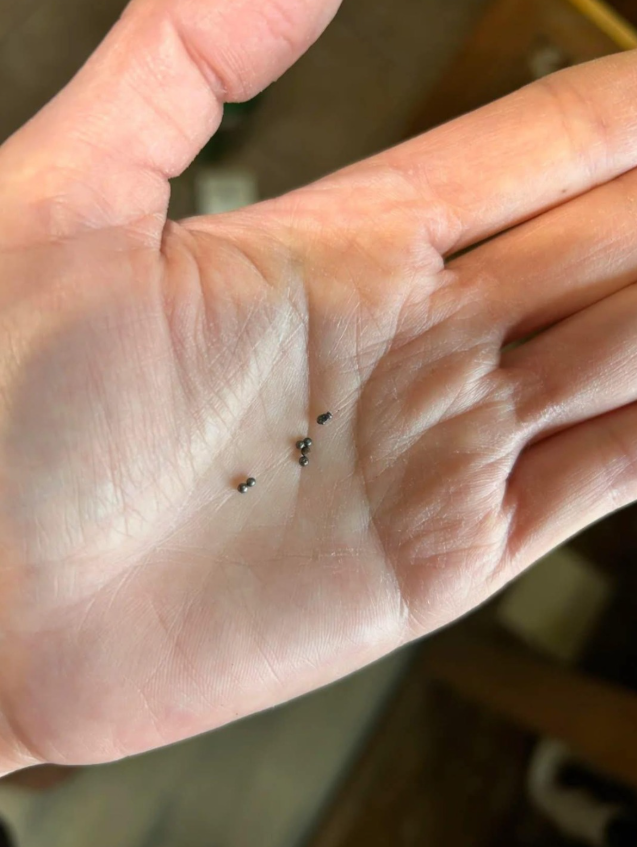And inside that weight?
Small steel or zinc alloy balls — used as ballast to balance the hose.
Over time, especially with frequent use or aging parts, the plastic or rubber casing around the weight can crack, split, or degrade.
When that happens?
The tiny metal balls spill out — dropping down into the cabinet below.
✅ This is by far the most common reason you’ll find metal beads under your sink.
🔎 How to Confirm It’s the Faucet Weight
Here’s how to check — safely and easily:
Step 1: Turn Off the Water (Optional)
For safety, shut off the water supply valves under the sink — especially if you plan to touch anything.
Step 2: Look at the Spray Hose
Pull out the spray nozzle fully
Open the cabinet door and look up along the hose path
You should see a small cylindrical weight (usually plastic or rubber) attached to the hose near the base of the faucet.
Step 3: Inspect the Weight
Look for:
Cracks or splits in the casing
Visible gaps where metal balls could escape
Loose or sagging hose (a sign the weight isn’t working)
💡 Pro Tip: Shine a flashlight — even small cracks can leak beads over time.
🛠️ What to Do Next: Replace the Weight
Good news:
This isn’t an emergency.
And it’s inexpensive and easy to fix.
Option 1: Buy a Replacement Weight
Visit a hardware store (Home Depot, Lowe’s) or shop online (Amazon, plumbing supply sites)
Search for: “kitchen faucet retract weight” or “spray hose weight”
Match the size/brand if possible (common brands: Moen, Delta, Kohler, Pfister)
Cost: $8–$15
Option 2: Replace the Entire Hose Assembly
If the weight is built-in or damaged beyond repair
Some hoses come with the weight pre-installed
Slightly more expensive ($20–$40), but often easier to install
🛠️ Installation tip: Follow manufacturer instructions — most slide or snap into place. No tools required.
🔍 Could It Be Something Else?
While the faucet weight is the #1 suspect, here are two other less common possibilities:
1. Dishwasher Drain or Pump Issues
Some older dishwasher models have internal components that wear down
Rarely, small metal fragments or bearings can escape into the drain line and end up under the sink
Check for pooling water, grinding noises, or poor cleaning performance
2. Garbage Disposal Wear
Internal grinding components can degrade over time
Metal shavings or debris may accumulate under the sink
Look for unusual grinding sounds or reduced performance
⚠️ If you suspect either, have a professional inspect the appliance.
✅ Prevention Tips
To avoid future surprises:
✅
Inspect the faucet weight every 6 months
Catch cracks early
✅
Avoid yanking the spray hose
Reduces stress on the weight
✅
Clean under the sink regularly
Spot issues before they grow
💬 Final Thoughts: Sometimes the Scariest-Looking Clues Have the Simplest Explanations
Finding random metal bits under your sink feels unsettling.
But more often than not, it’s not a sign of failure — it’s just wear and tear from a part doing its job.
So if you’ve found those mysterious metal balls…
Don’t panic.
Don’t assume the worst.
Just follow the hose.
Find the weight.
Replace it.
And next time you pull out your sprayer?
It’ll glide back perfectly — and quietly.
Because sometimes, the biggest household mysteries aren’t solved by detectives.
They’re solved by a flashlight, five minutes, and a $10 part.
